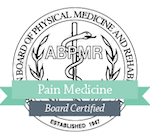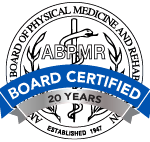
Not all pain we experience is physical. There is also nociceptive pain (from tissue damage or inflammation), muscular pain, psychogenic pain (from emotional factors), and neuropathic pain (from a dysfunctional or injured nerve).
Understanding neuropathic pain as a disease of the nervous system sheds on the riddle of why do we feel pain, solving the question of how pain occurs, and the reason for ‘some’ of the many pain syndromes we experience.
Pain-causing conditions vary. Some ordinary situations can trigger extra-ordinary pain to some people, the same way some methods of treatment do in healing. Some treatments are effective to others and others are not. This is the reason why new methods of treatments are on the rise, to eliminate all existing pain conditions or lessen the burden it causes at the very least.
In the last decade, there has been an enormous and rapid advancement in methods of pain management. Radiofrequency ablation has become one of those methods that is obviously gaining popularity.
What is a Radiofrequency Ablation?
Radiofrequency ablation, commonly known as Rhizotomy, is a minimally invasive procedure involving the use of radiofrequency waves to interrupt the nerves that are responsible for pain transmission.
Why Is It Performed?
Radiofrequency ablation is performed to stop the nerves from sending pain signals to the brain. One of the conditions that can be treated with rhizotomy is facet joint pain.
Facet joints are located on your spinal column. These joints enable you to bend and twist, as well as to make your back flexible.
By generating heat around the affected nerve, the nerve gets ablated (or interrupted), destroying its ability to send and transmit pain signals to the brain. The goal of this procedure is to eliminate your pain for months, and possibly for years to improve your function.
How To Prepare For The Procedure
- If you are driving, you must arrange with someone to drive you home after the procedure.
- Starting a week before your procedure, you may be instructed not to take Aspirin or any blood-thinning products. (You can clarify this with the doctor upon consultation.)
- 3 days before your procedure, you should avoid taking medications like NSAIDs—Ibuprofens, Naproxens, and other similar drugs. (You can clarify this with the doctor upon consultation.)
- Be aware that on the day of the procedure, you may be instructed to eat only a light meal prior to the procedure.
- Pain medications, muscle relaxants, nerve medications can be taken on the day of the procedure AS INSTRUCTED.
- Be sure to inform your physician if you caught a flu, cold, or other infection few days prior to the procedure.
What Happens During The Procedure?
Radiofrequency ablation, or Rhizotomy is performed by generating heat using radio frequency waves around the affected nerve. But prior to that, an MRI or Discography should be done to check the exact location of where the pain originates.
At the procedure room, you will be lying faced down, and the area of your pain is exposed. Then, it will be cleaned with an anti-septic solution. Your doctor will then use the radiofrequency machine to interrupt the nerves (ablation) that are responsible for your pain.
This procedure usually takes anywhere between an hour to 2 hours.
What Happens After The Procedure?
- After the procedure, you will be taken back to a recovery or examination room for a short time.
- A nurse, or a staff member will check your vital signs.
- Some people experience muscle spasms, fever, dizziness or numbing sensations after the procedure. If you have any of these side effects, just tell your doctor.
- It may take as long as 3-6 weeks for you to notice any pain relief after the procedure.
- You may be advised to have a physical therapy session following the procedure.
- You will be instructed for follow-up visits after the procedure.
References:
Thernstrom, M. (2010). The pain chronicles: Cures, myths, mysteries, prayers, diaries, brain scans, healing, and the science of suffering. New York: Farrar, Straus and Giroux.
Retrieved January 23, 2017, from https://en.wikipedia.org/wiki/Radiofrequency_ablation#Pain_management



